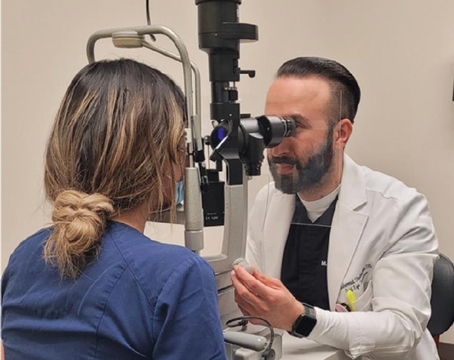There's no question that your website can dramatically increase the amount of patient traffic that you get. Provided, that is, that you follow certain guidelines that give the visitors to your site easy-to-follow information that clearly explains why they should consider coming to your practice.
This article deals with some common mistakes that can leave visitors to your website frustrated and confused, and leave you with a bunch of lost opportunities. While some of these issues relate primarily to commercial websites, medical practices can learn valuable lessons from others' mistakes, too.
Mistake #1: Not Getting Off to a Fast Start
In most cases, visitors to your website have one objective in mind—they want useful information. And yet, the content on many websites is poorly organized and often not written from the visitor's point of view. Often, the visitor is greeted with some elaborate, slow-loading flash animation along with an indication of what percentage of the page has loaded. Frequently the merciful offer to "Skip intro" appears on the page. Basically the site owner is admitting he knows the page takes too long to load. So why have it? It would be like going into a store and having someone grab you by the arm and ask you to look at the store design before you start looking for what you really want. You have a few precious seconds to convince your visitor that you are the one best-suited to meeting his needs. You can't afford to waste it or you'll lose an opportunity to add a new patient to your practice.

Mistake #2: Hiding Your Message
Many websites are crammed with lots of information that describes services and products. What's wrong with this picture? This: your visitors are interested in how those products and services will benefit them. The reader wants to know, "What's in it for me?" And you need to tell him—immediately. The way to do it is by creating an easy-to-see headline that promises a specific and compelling benefit. By doing so, you're telling the reader, "I know what you want."
Concentrate on what your practice does for the reader. For example, the reader doesn't want eyeglasses. He wants to know if his eyes are in good shape and if there are any potential problems starting to develop. Your job as a communicator is to clearly convey how your experience equips you to effectively address his needs. Using the word "you" a lot in your copy will help you to present your offering from the reader's point of view and get your sales message out in the open where the reader can see it.
Mistake #3: Making Your Copy Hard to Follow
There are two basic types of readers who will come to your website for information: those who want lots of it, and those who just want the big picture. If they're interested, they can go back and read more. This second group is the one you need to keep in mind when you write copy for your website. A good way to give the "skimmers" what they need is through the use of "subheads." These mini-headlines allow those looking for the main points to quickly read through your copy. For subheads to be effective, it's important to make sure they highlight the benefits of your product or service. Example: "A Happy Customer Speaks Out" subhead is more likely to engage the reader when it's rewritten as "Finally … an Ophthalmologist Who Could Help Me." Don't make the skimmers work to get your message. They won't.
Mistake #4: Leaving Your Visitors in Limbo
One of the most common mistakes salespeople make is not asking for the order. They do everything else in the sales process: determine customer needs and wants; show how their solution solves the problem or meets the need; address objections; provide additional information. And then they don't close the sale by asking for the order. It's the same with many websites. Many simply leave the reader dangling in the wind after presenting all the information a patient needs. Guess what the reader will do if we don't indicate what the next step is in the buying process? That's right. Nothing. They will just drift off. To your competition. And you will lose a potential patient you should have gotten.
What's the solution? Tell the reader what to do. "Call today and be one of the first 50 people this month to receive a complimentary eye exam." Or "Sign up for our e-newsletter today and receive an instant download of our Free Report, The Silent Thief That's Robbing Americans of Their Eyesight and How You Can Make Sure You Don't Become a Victim.
Mistake #5: Steering Potential Patients to Competitors
If someone called you up and said he was planning to make a purchase in the next few months and wanted some information, what would you do? If you're like most business people, you'd probably try to qualify him a little more by asking some questions and give him some information based on what his needs were. And you'd most likely get his name and number so you could stay close until he was ready to make a buying decision. Why don't we do this on our websites?
Statistics show that most people who land on your website for the first time will not buy. They are there to collect information and compare your offering with those of your competitors. If you don't have a meaningful way to capture your reader's contact information, then you have no way of continuing the relationship. Ah, you say, but some will bookmark my site and return to it later when they are ready to buy. Good luck. How many times have you bookmarked a site only to forget why you did so in the first place? It doesn't happen.
So what can you do? Offer value in the form of a free e-zine or electronic newsletter that provides them with meaningful information. Or you can create a free report of tips relevant to specific ocular conditions, perhaps. Make sure this offer is easy to see on the home page of your website and that you're making the offer in exchange for your reader's e-mail address. Getting permission to re-contact visitors to your website so that you can continue the relationship should be your most important objective.
Mr. Black is an independent copywriter and consultant specializing in direct response online copywriting. He writes copy that generates online leads and sales for solo professionals and small companies, including web copy, e-zines and direct-mail sales letters. Learn more about how he can add value to your practice at gerryblackcopywriter.com, e-mail him at gerryblack@gerryblackcopywriter.com or phone him at (905) 716-7130.





